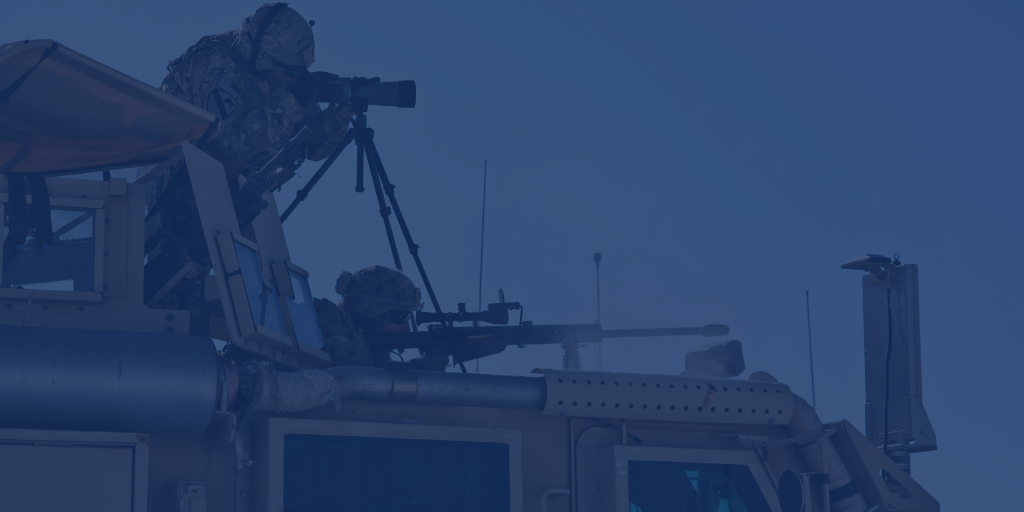Advancements in radio frequency and microwave hardware are leading next-generation technology today. What will the evolution of electronic warfare look like tomorrow?
With rapid growth of electronic warfare driving increased demand for military electronic components, new hardware and complementary software developments are emerging that will increase signal intelligence across the spectrum, improve targeting capabilities, and enhance national security.
WHAT ARE THE LATEST ADVANCEMENTS IN INTELLIGENCE HARDWARE?
One critical development, still evolving today, is L3Harris’s Interference Cancellation System (INCANS), which enables communication signals even while signal jammers are active. Before this, pilots operating signal jammers were either completely offline or had to communicate through primitive means, such as by flashing lights.
Northrop Grumman Corporation’s AN/ALQ-257 Integrated Viper Electronic Warfare Suite (IVEWS) for the U.S. Air Force F-16 fleet has demonstrated enhanced abilities — even exceeding benchmarks — to counter advanced radio frequency threats in U.S. Air Force Laboratory Intelligence Validated Emulator (LIVE) testing. The LIVE testing technology is innovative in and of itself: it’s an intelligence-validated, closed-loop RF direct-injection threat radar emulator developed by Leidos to test emerging EW technologies.
With a focus on spectrum convergence to synergize electronic warfare, signals intelligence, information operations, and cyberwarfare, Lockheed Martin has partnered with BAE Systems to produce the AN/ASQ-239 for the F-35. The AN/ASQ-239 is capitalizing on the SWaP movement, with a significantly reduced footprint and over 79% system cost reduction. At the same time, the AN/ASQ-239 maintains a 360º view through signal-dense environments and integrates radio frequency and infrared countermeasures into one compact system.
HOW ARE OEMs UNIFYING LOW-, MID-, AND HIGH-BAND FREQUENCIES?
The U.S. Department of Defense and the Australian Department of Defence are joining forces to bring together the best of the electromagnetic spectrum with the Next Generation Jammer (NGJ), which will be released in three stages to provide capabilities across the low-band (100 MHz to 2 GHz), mid-band (2 GHz to 6 GHz), and high band (6 GHz to 18 GHz) frequencies to the Boeing EA-18G Growler aircraft.
The initial release for the mid-band (AN/ALQ-249 NGJ-MB) is contracted to Raytheon and scheduled for initial operational capability in 2023. The NGJ-MB will augment the ALQ-99 Tactical Jamming System, enhancing its long range and simultaneous targeting capabilities with solid-state electronics, award-winning gallium nitride (GaN)-based semiconductors, and high-powered, agile beam-jamming techniques.
Up next is the low-band upgrade (NGJ-LB) that will be produced by L3Harris. The new tech will be optimized for SWaP with enough precision to detect stealth aircraft while being compact enough to fit on the EA-18G Growler.
The high-band frequency (NGJ-HB) will be the last piece of the puzzle, completing the NGJ system for significantly enhanced Airborne Electronic Attack (AEA) operations. All in all, these hardware upgrades will provide much-needed reliability, automate threat responses, and uniquely combine EW and radar tasks with SIGINT and communications.
WHAT IS THE ROLE OF MACHINE LEARNING IN COGNITIVE ELECTRONIC WARFARE?
Artificial intelligence is making headlines, and there’s been a cultural shift in the way organizations have pivoted to data-driven decision-making. As such, it was only a matter of time before machine learning (ML) was integrated into electronic warfare to introduce a new genre of research and development: cognitive electronic warfare.
With more wavelengths being utilized for enhanced communications, there’s a need for an intelligent method of identifying specific signals within the “proverbial cocktail party of signals,” as described by Paul Tilghman, program manager for the U.S. military’s Defense Advanced Research Projects Agency (DARPA) Microsystems Technology Office.
DARPA launched its Radio Frequency Machine Learning Systems (RFMLS) program to use ML to identify both known and unexpected signals based on large datasets of RF signals. AI has transformed from “simple” predictive, rule-driven coding — hand-engineered solutions for specific problems, such as radios that automatically switch to unused frequencies when encountering interference — to agile ML systems trained on large datasets to develop complete spectrum awareness.
Cognitive electronic warfare will be increasingly important for military defense as internet-of-things (IoT) warfighting networks emerge in the global defense landscape. Northrop Grumman is already developing ML algorithms for the EA-18G Growler airborne electronic attack (EA) suite, with an anticipated release in 2025.
It seems every tech-based industry is focused on reducing size, weight, and power while increasing performance demands — but nowhere is this more critical than electronic warfare (EW) systems. While modernizations of radio frequency and microwave hardware for electronic warfare systems are keeping pace with the technological boom of the Digital Revolution, major players in the aerospace and defense industries will continue to release new innovations to meet SWaP demands for enhanced RF and microwave EW technologies.
Read more:





